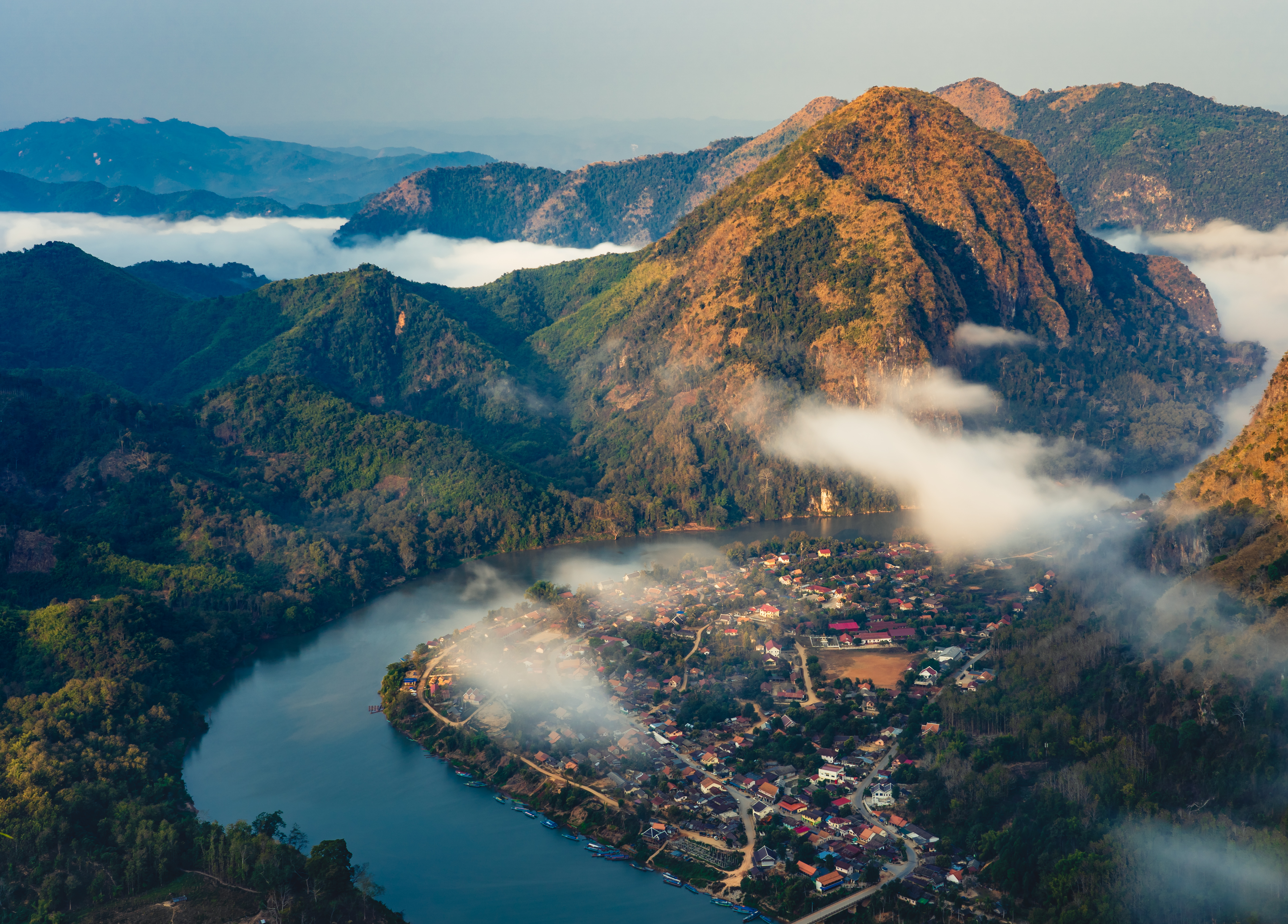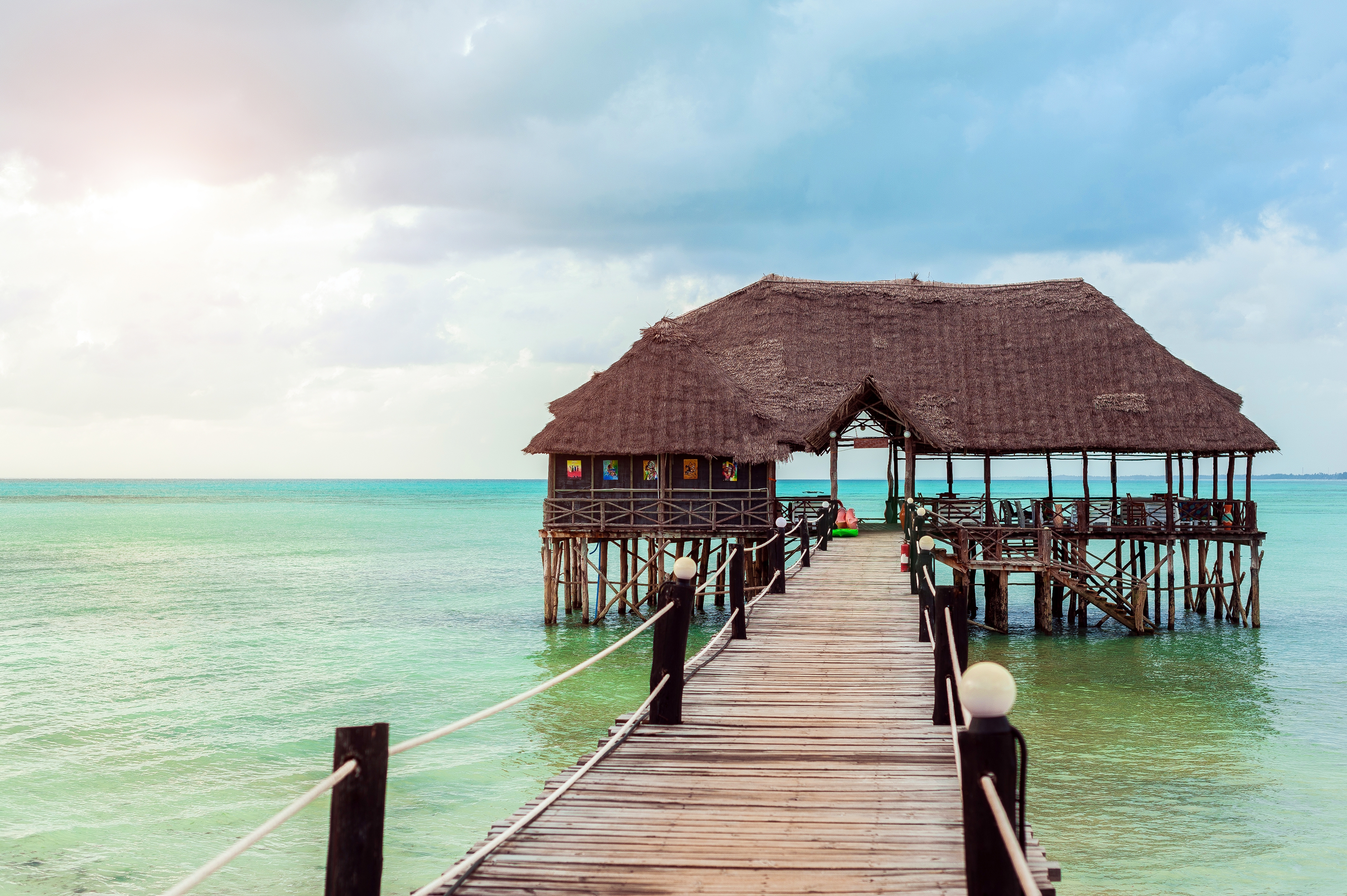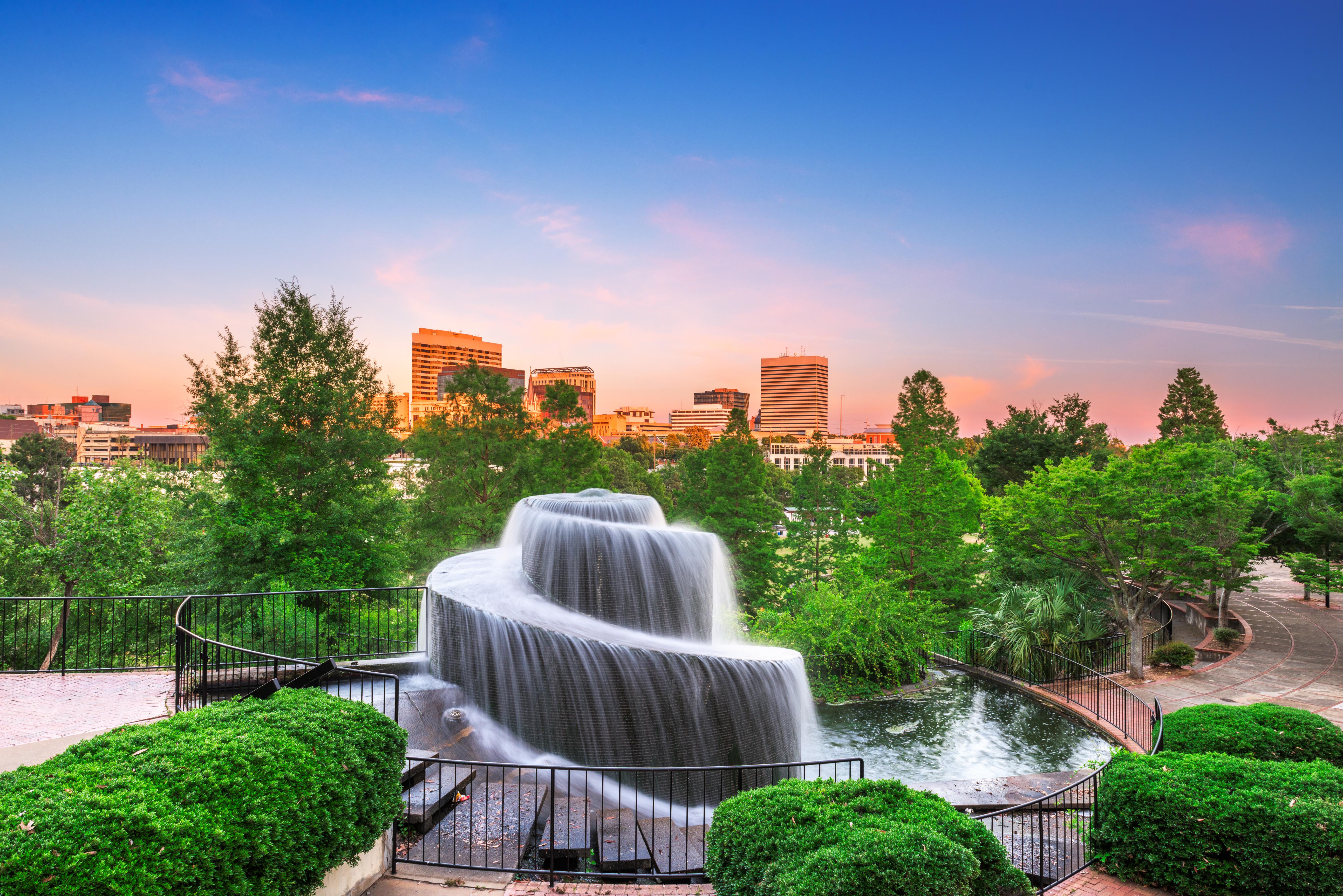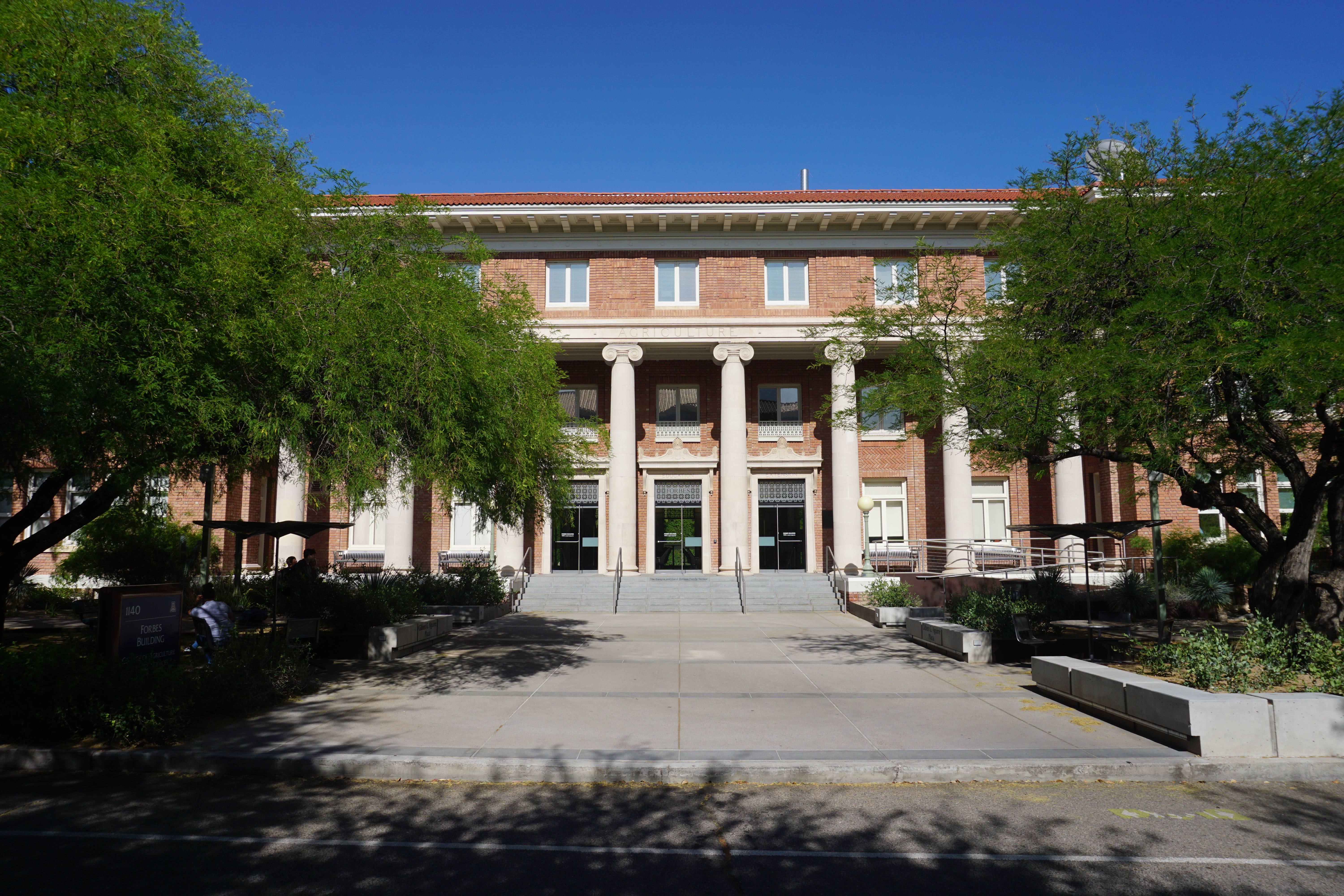15 Epic Landmarks Around The World You Have To See To Believe
The world is filled with incredible landmarks that captivate travelers with their sheer scale, intricate designs, and mysterious origins. While many are natural wonders, some of the most astonishing sites are entirely man-made—testaments to human ingenuity, ambition, and artistry. From towering statues to intricate carvings in remote landscapes, these creations inspire awe and wonder. This article explores 15 extraordinary landmarks crafted by human hands, each pushing the limits of what we think is possible. Prepare to be amazed by these monumental feats from across the globe.
1. The Leshan Giant Buddha – China
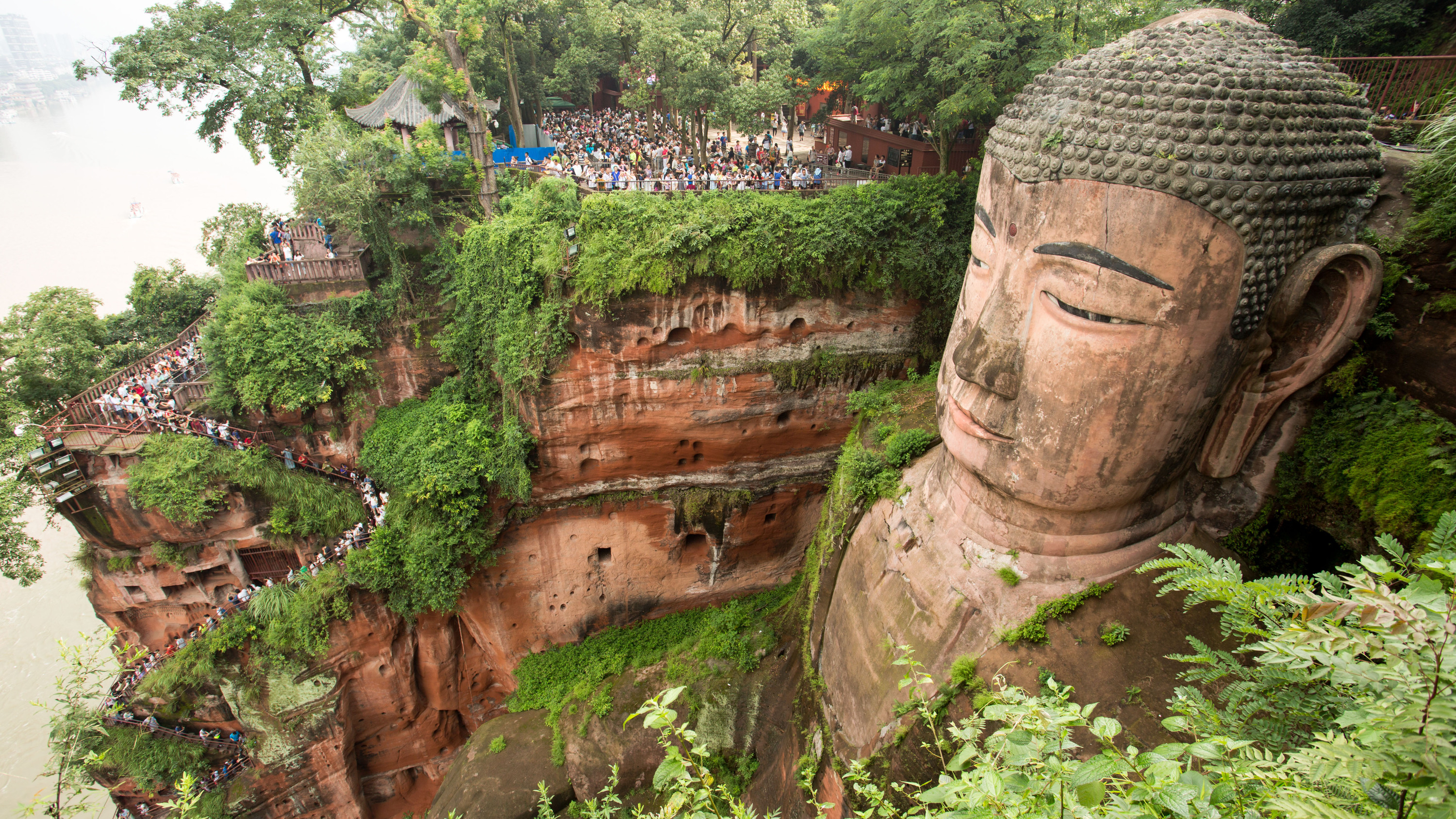
Carved into a cliff overlooking the confluence of the Min, Dadu, and Qingyi rivers in Sichuan, China, the Leshan Giant Buddha is a masterpiece of Buddhist art and engineering. Standing at 71 meters tall, it is the largest stone Buddha in the world. Construction began in 713 CE during the Tang Dynasty under the guidance of a monk named Haitong, who believed the statue would calm the turbulent waters below, protecting local fishermen and travelers. The project took nearly 90 years to complete and required extraordinary ingenuity. Workers chiseled away at the rock face to form the Buddha’s serene expression and flowing robes, while hidden drainage systems were carved into the statue to prevent water damage over centuries. The Leshan Buddha is a UNESCO World Heritage Site and continues to draw millions of visitors annually, inspiring awe with its scale and serenity.
2. The Spring Temple Buddha – China
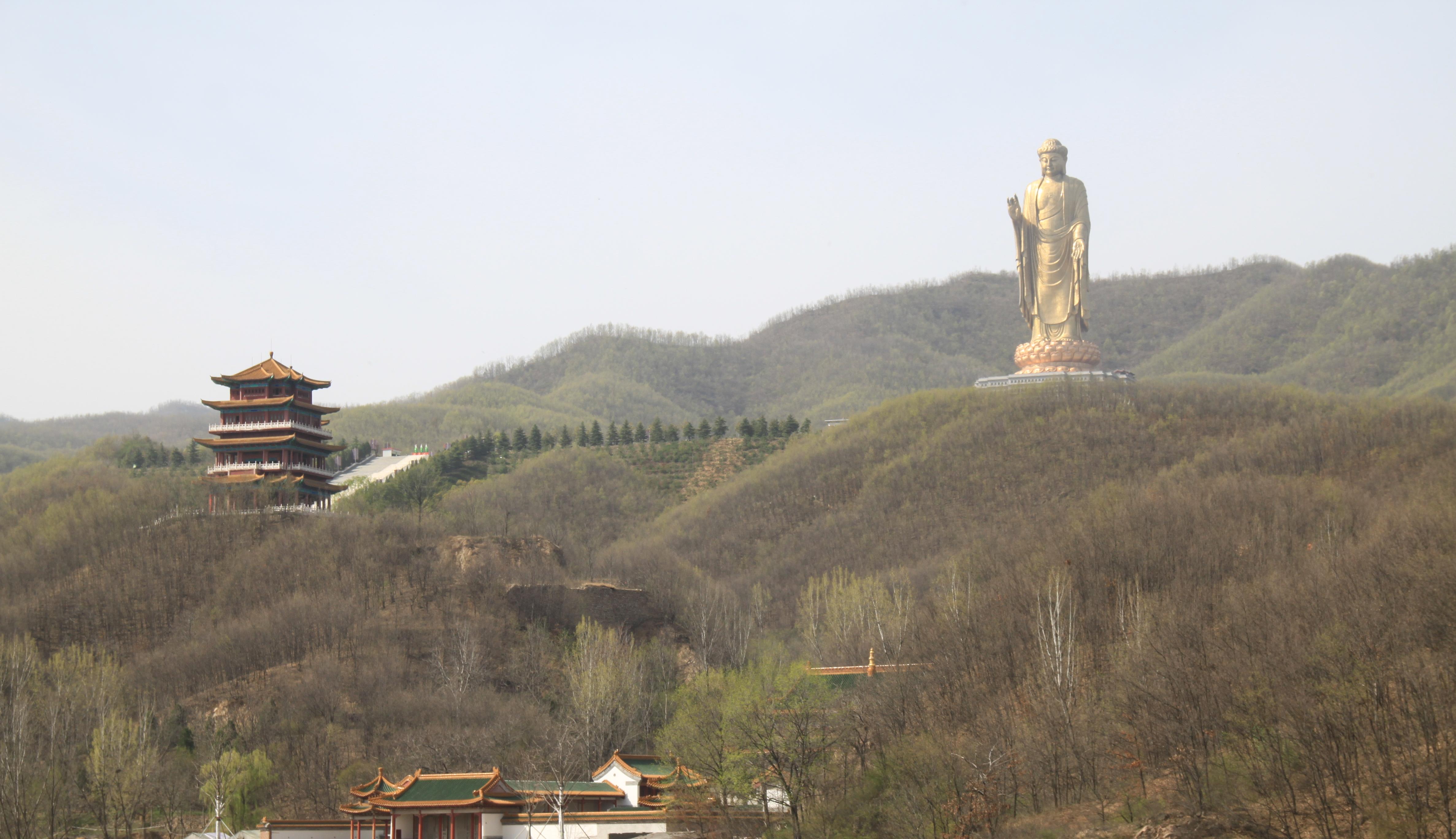
The Spring Temple Buddha in Henan Province, China, stands as a modern marvel of engineering and devotion. At a staggering 128 meters tall (and 208 meters including its pedestal), it is the tallest statue in the world. Completed in 2008, this colossal representation of Vairocana Buddha is made from over 1,100 copper castings, each precisely crafted and assembled to form its gleaming surface. The statue stands atop a lotus-shaped base and is surrounded by a landscaped park designed to encourage meditation and reflection. Beneath the structure lies a series of temples, making it not only a symbol of peace but also a spiritual sanctuary. The Spring Temple Buddha reflects the enduring influence of Buddhist culture in China and represents humanity's unrelenting drive to create monumental works of art.
3. The Great Sphinx of Giza – Egypt
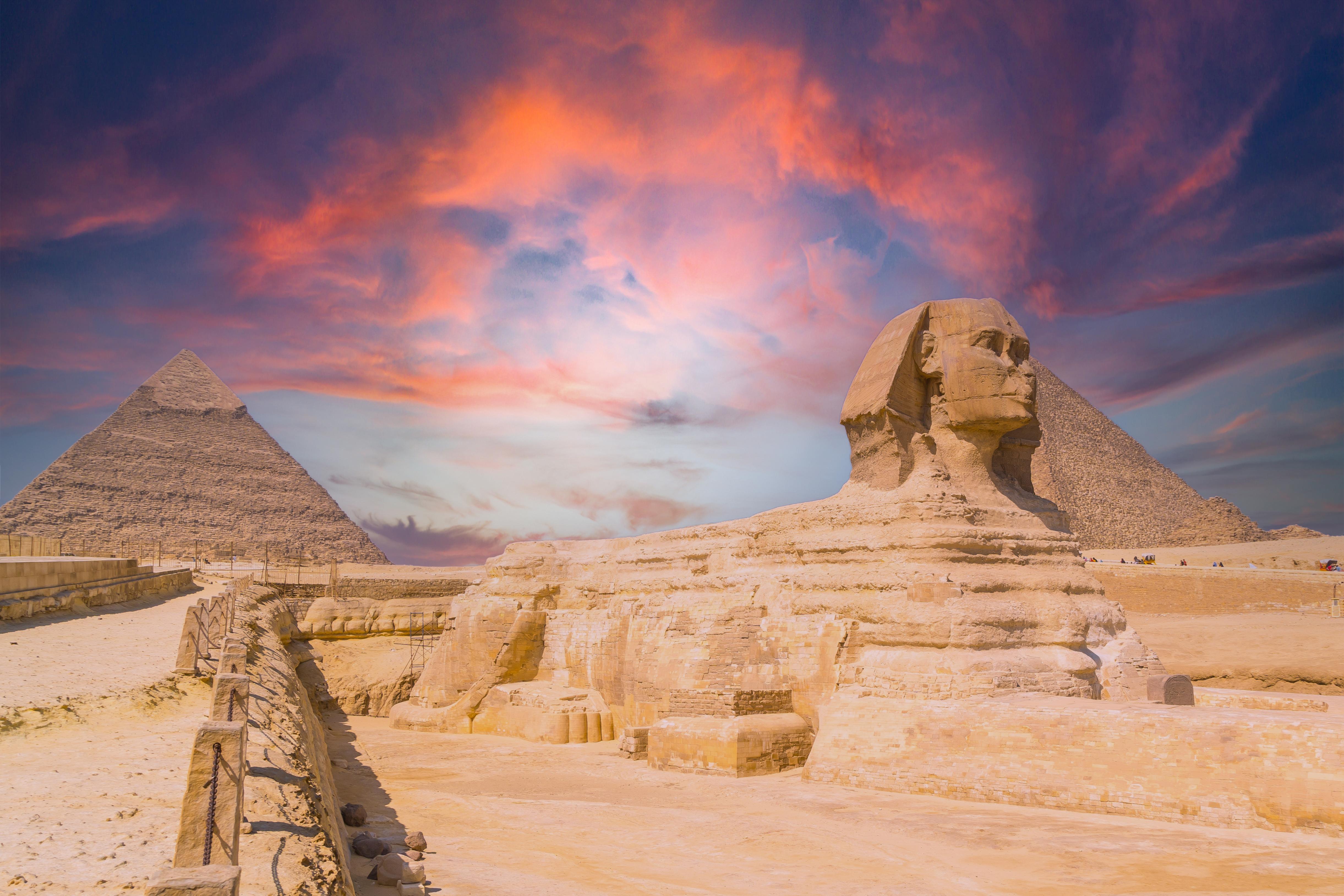
The Great Sphinx of Giza, one of the oldest and most enigmatic landmarks in the world, has stood as a sentinel on the Giza Plateau for over 4,500 years. Believed to have been carved during the reign of Pharaoh Khafre (circa 2500 BCE), this limestone statue measures 73 meters in length and 20 meters in height. Its unique form combines the body of a lion with the head of a pharaoh, symbolizing strength and wisdom. The construction of the Sphinx required advanced techniques to carve and transport massive limestone blocks. Over millennia, the monument has faced erosion, sand burial, and human intervention, yet it remains a symbol of ancient Egyptian culture and mystery. The purpose of the Sphinx, whether as a guardian of the pyramids or a representation of celestial power, continues to spark debate and fascination among archaeologists and tourists.
4. The Kailasa Temple – India
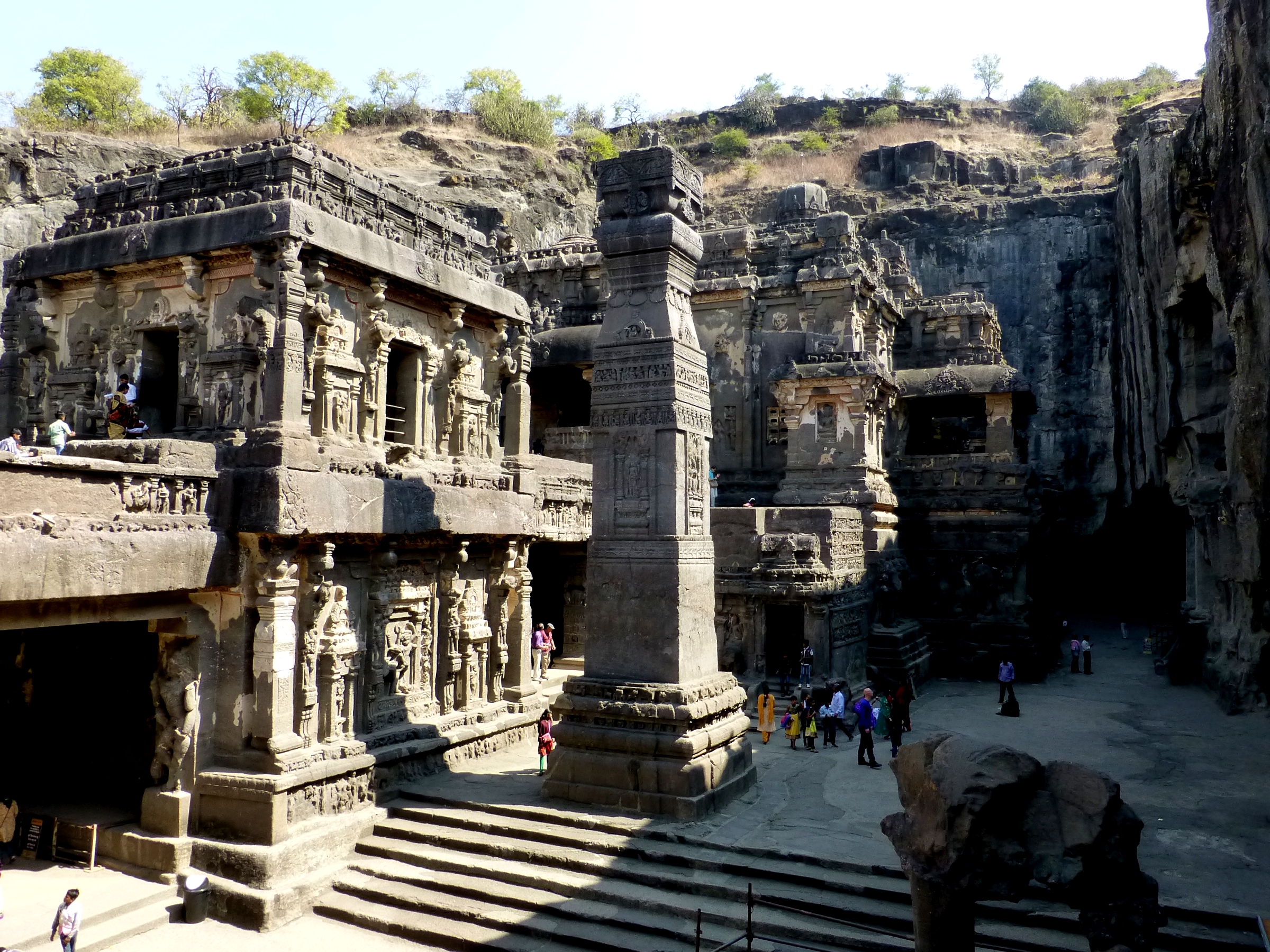
The Kailasa Temple in Ellora, Maharashtra, India, is an extraordinary feat of architecture and devotion. Carved entirely from a single basalt rock, this temple is part of the Ellora Caves complex and is dedicated to Lord Shiva. Constructed during the 8th century by the Rashtrakuta dynasty, the temple showcases the pinnacle of Indian rock-cut architecture. The temple’s design is awe-inspiring: a massive courtyard is surrounded by intricately carved columns, shrines, and elephant statues. The central shrine rises 32 meters, symbolizing Mount Kailash, the mythical abode of Shiva. The craftsmanship is so precise that it appears as if the temple was sculpted from the top down. This remarkable engineering feat required thousands of laborers and spanned decades, making the Kailasa Temple a testament to human ingenuity and spiritual dedication.
5. The Gates of the Sun – Bolivia
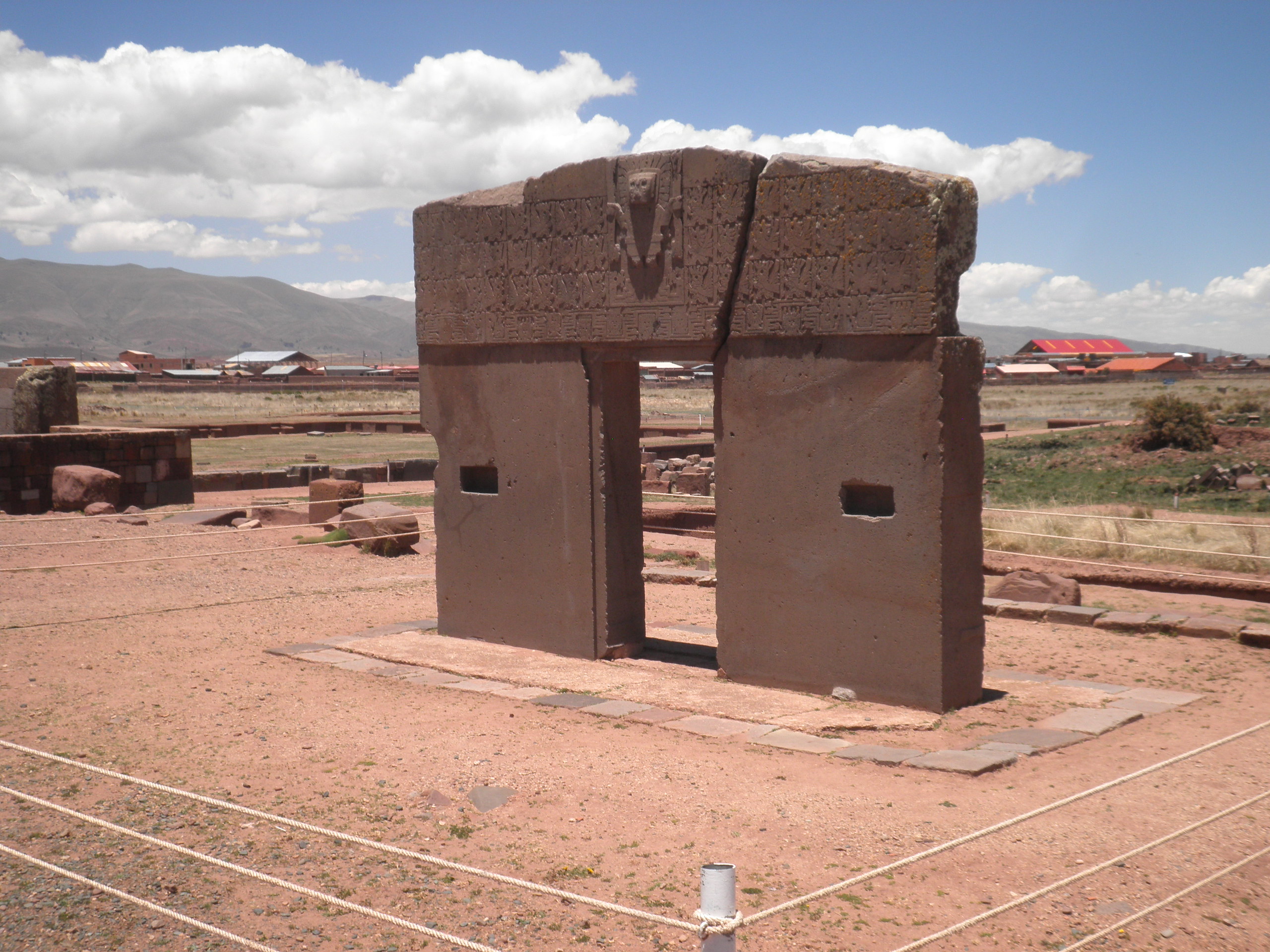
The Gates of the Sun, located near Lake Titicaca in Bolivia, is a mysterious and monumental structure crafted by the ancient Tiwanaku civilization around 500 CE. Made from a single slab of andesite stone weighing over 10 tons, the gate features intricate carvings of deities and symbols, including the central figure of Viracocha, the Andean creator god. The precise purpose of the Gates of the Sun remains unknown, but scholars believe it may have served as an astronomical calendar or a ceremonial portal. Its construction showcases advanced knowledge of stone-cutting and alignment with celestial events. Despite its age and partial damage, the monument continues to captivate visitors, offering a glimpse into the spiritual and scientific achievements of the Tiwanaku people.
6. The Statue of Unity – India
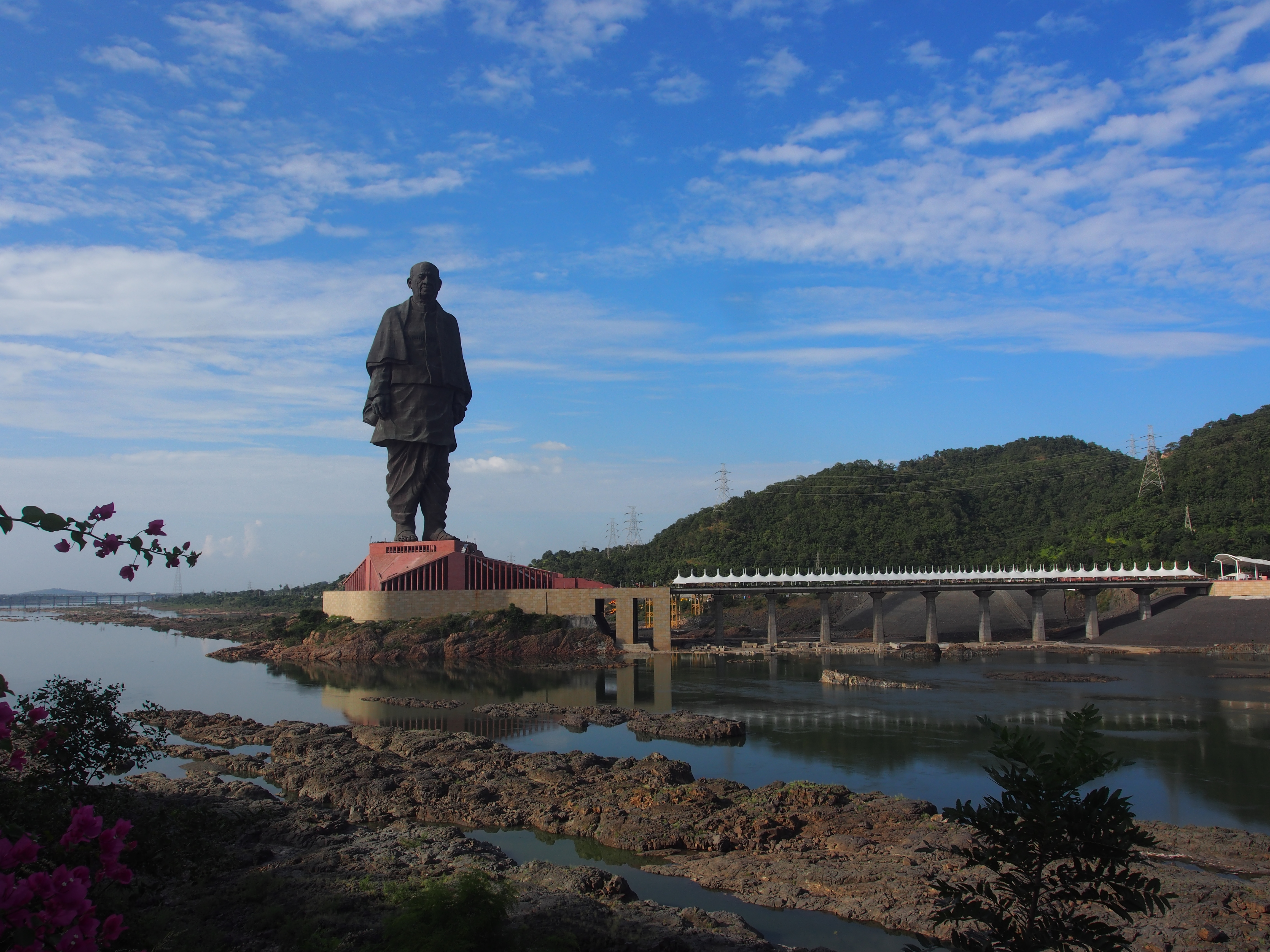
The Statue of Unity, towering at an impressive 182 meters, is a modern tribute to one of India’s most revered leaders, Sardar Vallabhbhai Patel. Located in Gujarat, this monumental statue was completed in 2018 and required over 2,000 workers, 3,000 tons of bronze cladding, and nearly five years of construction. The statue depicts Patel in a walking pose, symbolizing determination and progress. Its base houses a museum detailing Patel’s role in uniting India after independence. The site also features viewing galleries, gardens, and a surrounding reservoir, creating a comprehensive cultural and educational experience. The Statue of Unity not only celebrates India’s history but also highlights its engineering prowess on a global stage.
7. The Ajanta Caves – India
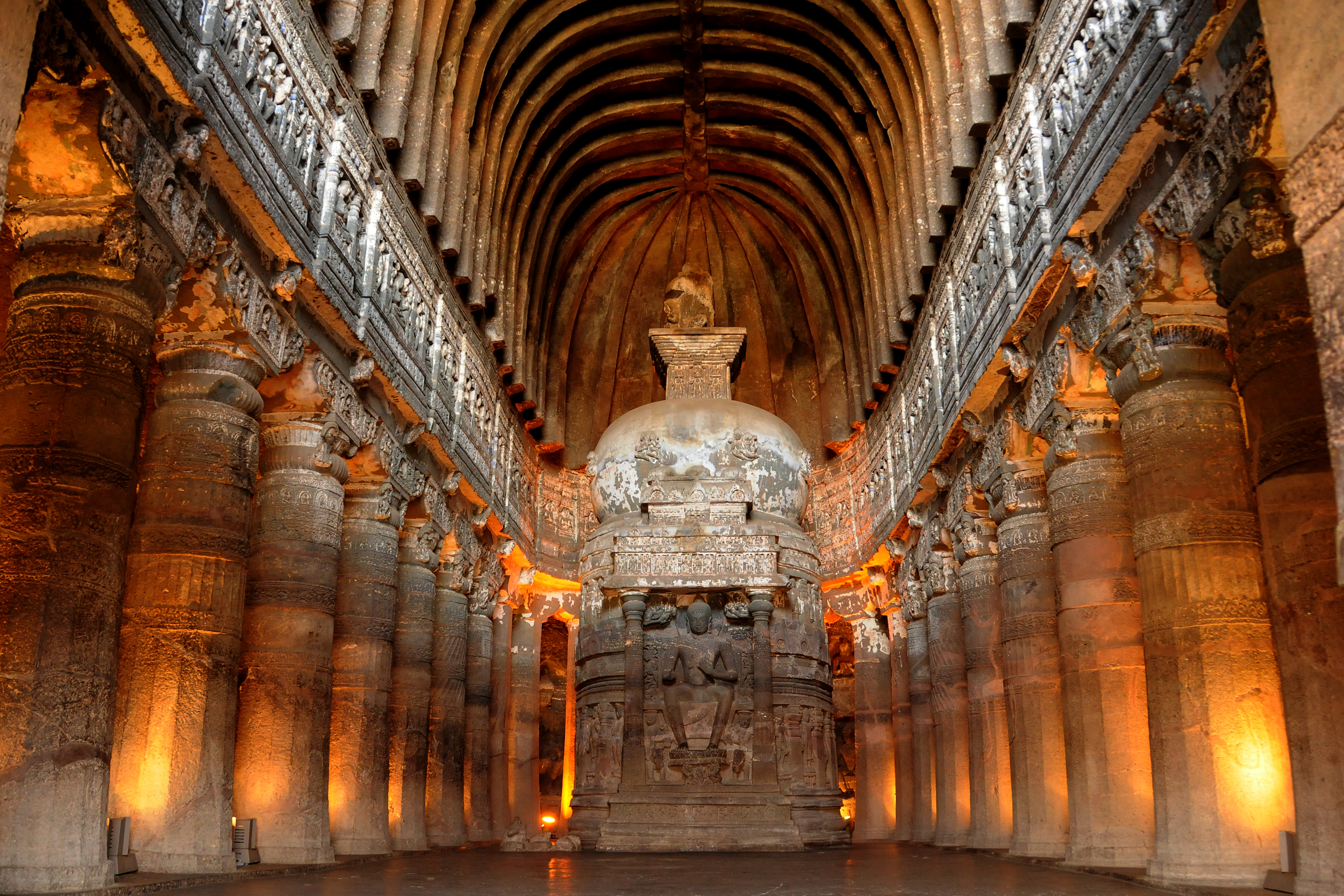
The Ajanta Caves, located in Maharashtra, India, are an extraordinary collection of 29 rock-cut caves dating back to the 2nd century BCE. These caves, carved into a horseshoe-shaped cliff, were used as monastic retreats for Buddhist monks. Each cave is adorned with intricate murals, sculptures, and prayer halls, showcasing the artistic and spiritual achievements of ancient India. The vibrant frescoes depict scenes from Buddhist legends, daily life, and royal courts, offering a window into a bygone era. Despite being abandoned for centuries, the caves were rediscovered in 1819 and have since become a UNESCO World Heritage Site. The Ajanta Caves stand as a testament to the fusion of art, religion, and craftsmanship, captivating visitors with their timeless beauty.
8. The Cristo Redentor – Brazil
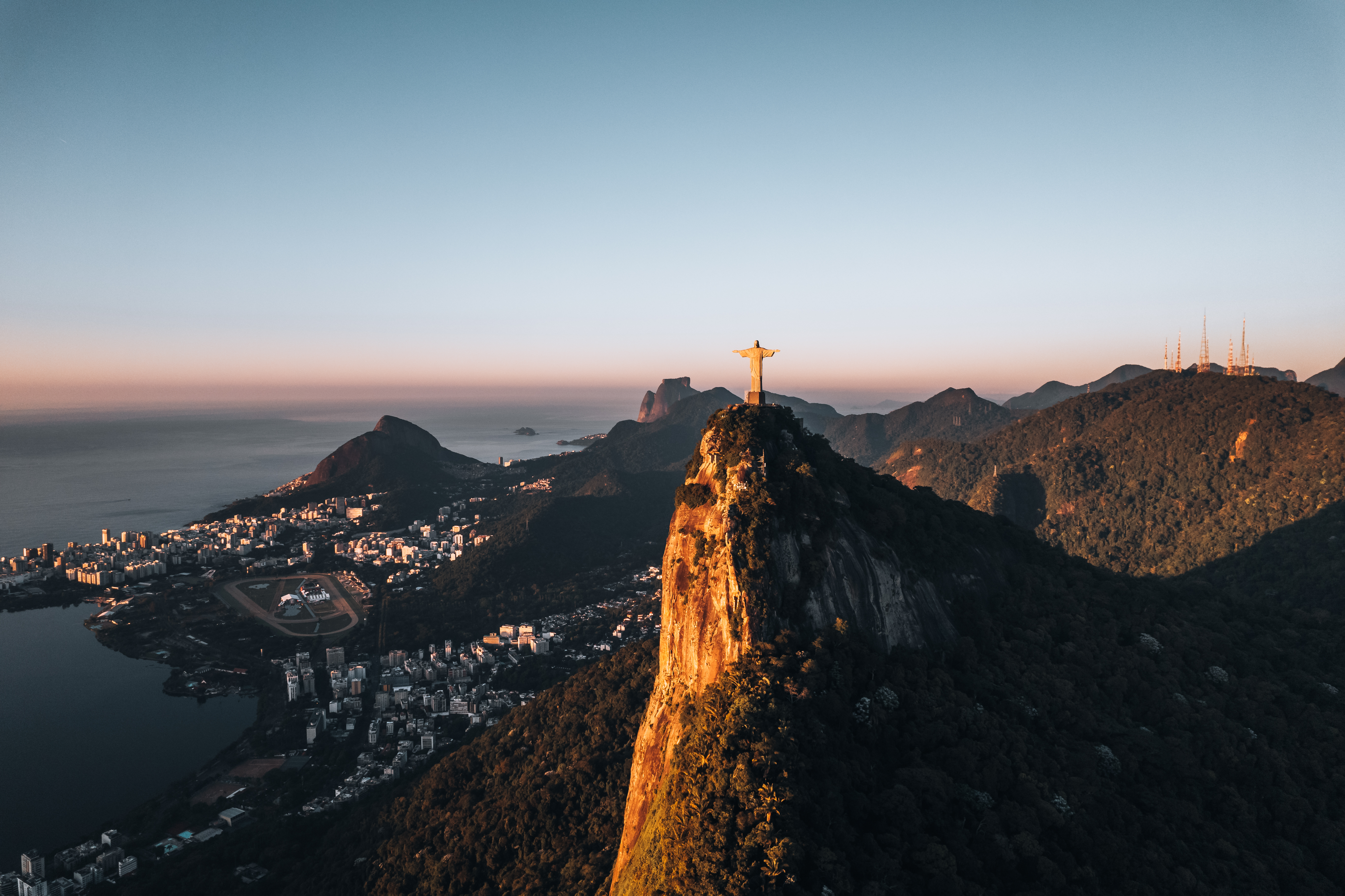
Cristo Redentor (Christ the Redeemer), a 30-meter-tall statue of Jesus Christ, is an enduring symbol of Brazil and one of the most recognizable landmarks in the world. Perched atop Mount Corcovado in Rio de Janeiro, the statue overlooks the city with its arms outstretched in a gesture of peace and protection. Designed by French sculptor Paul Landowski and completed in 1931, the statue was constructed using reinforced concrete and soapstone, materials chosen for their durability. The location presented immense logistical challenges, requiring the pieces to be assembled on-site. Today, Cristo Redentor is not only a religious symbol but also a cultural icon that draws millions of visitors annually, offering breathtaking views of Rio’s coastline.
9. The Borobudur Temple – Indonesia
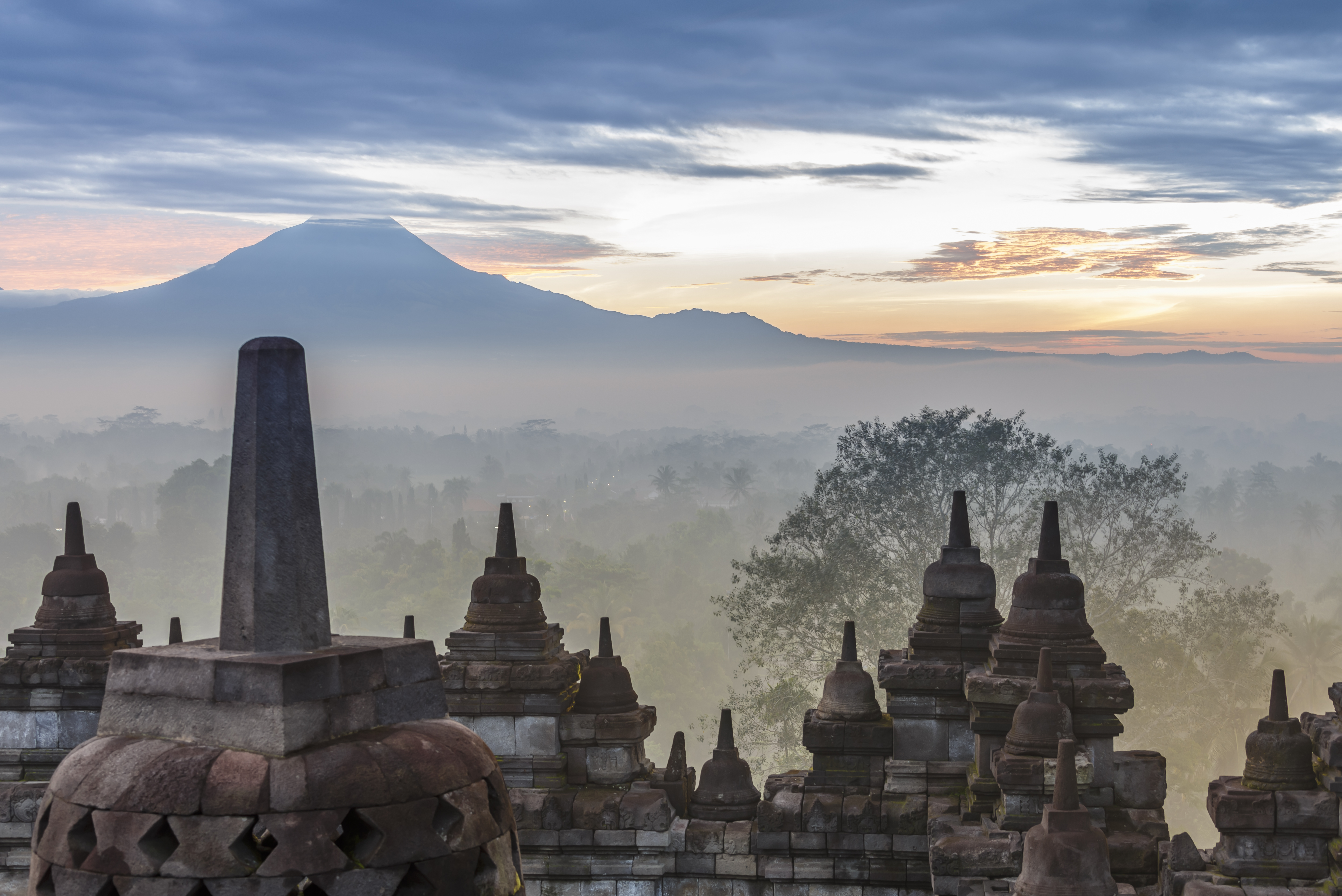
Borobudur Temple, located in Central Java, Indonesia, is the world’s largest Buddhist temple and a masterpiece of ancient architecture. Constructed in the 9th century by the Sailendra dynasty, this massive temple complex consists of nine stacked platforms, a central dome, and over 500 Buddha statues. The temple is built in the shape of a mandala, symbolizing the Buddhist cosmology and the path to enlightenment. The bas-reliefs carved into the temple's walls depict scenes from Buddhist texts, everyday life, and spiritual teachings, providing a visual narrative for worshippers. The central dome is surrounded by 72 stupas, each housing a seated Buddha statue. Borobudur was abandoned in the 14th century as Islam spread across the region, but it was rediscovered in the 19th century. Today, it is a UNESCO World Heritage Site and a pilgrimage site for Buddhists, as well as a stunning example of cultural and religious harmony.
10. The Motherland Calls – Russia
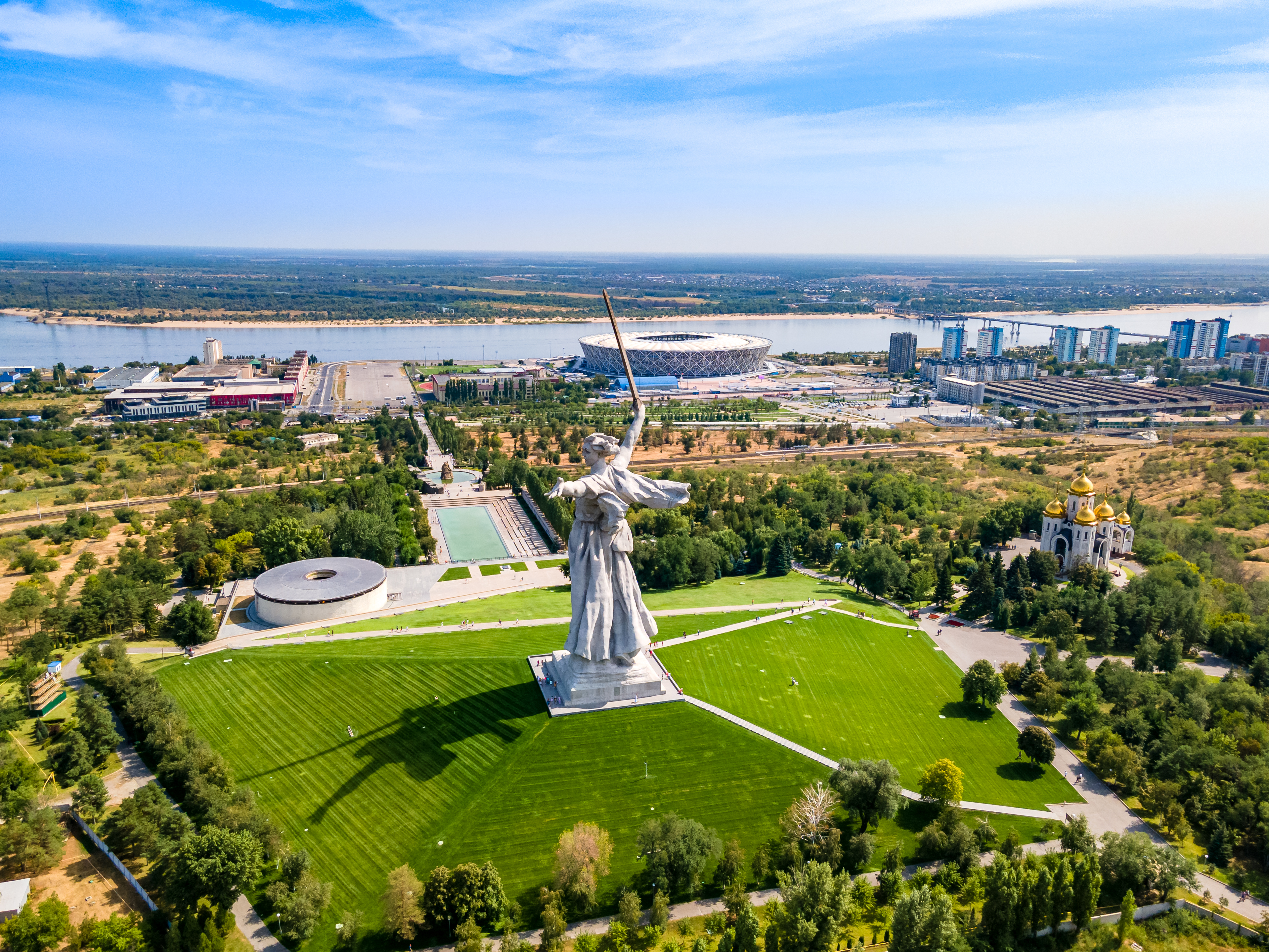
The Motherland Calls, located in Volgograd, Russia, is a towering statue commemorating the Soviet victory in the Battle of Stalingrad during World War II. Completed in 1967, this colossal sculpture stands 85 meters tall and depicts a woman wielding a sword, calling her people to defend their homeland. At the time of its completion, it was the tallest statue in the world and remains one of the most dramatic representations of resilience and patriotism. The statue’s dynamic pose, with its outstretched arm and billowing robes, conveys a sense of urgency and determination. Beneath the statue lies a memorial complex honoring the fallen soldiers, making the site a place of reflection and remembrance. The engineering behind The Motherland Calls is remarkable, with a steel framework and pre-stressed concrete used to balance its immense weight. It continues to inspire awe and reverence, symbolizing the strength and sacrifice of a nation.
11. The Temple of Abu Simbel – Egypt
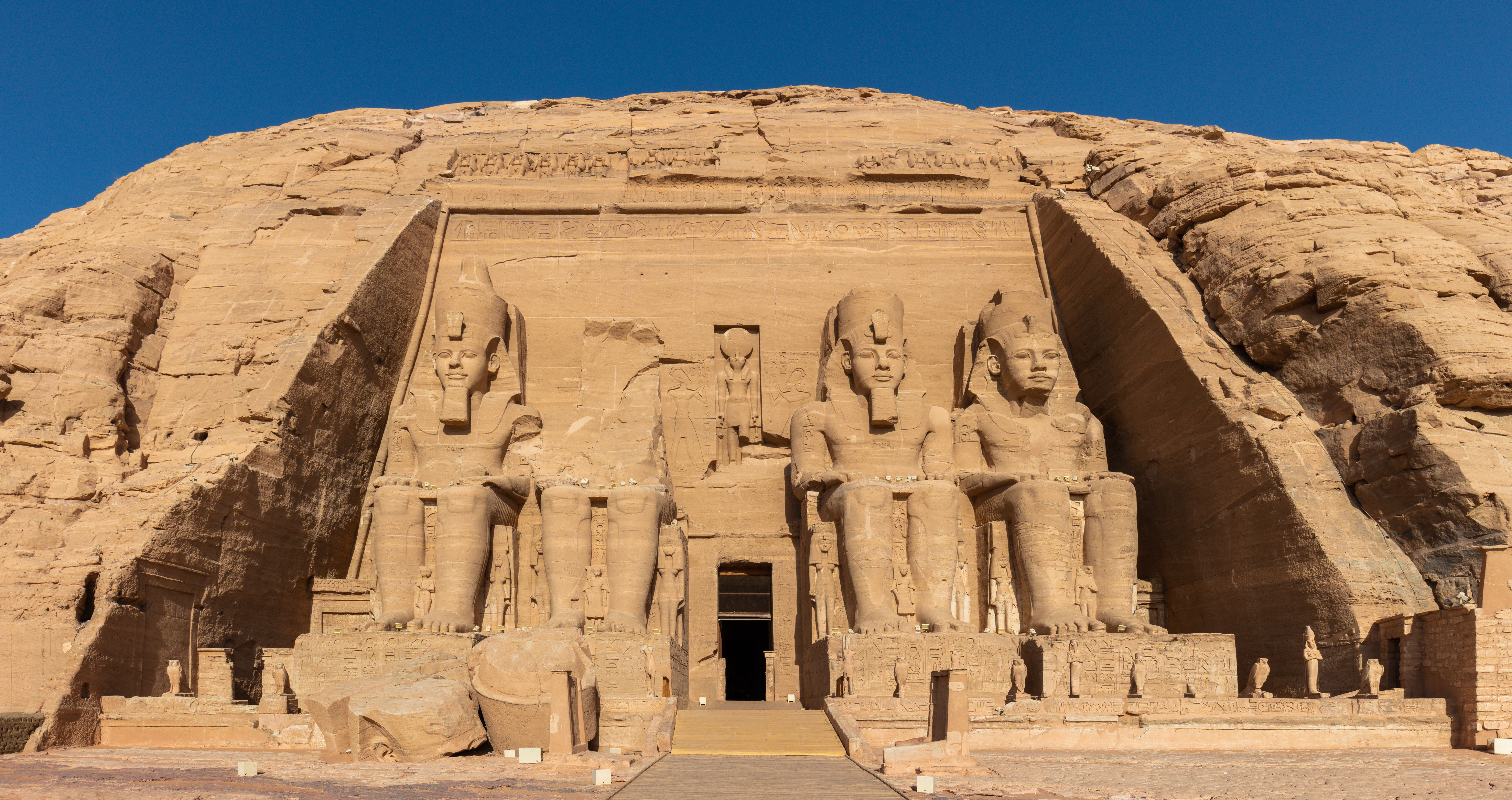
The twin temples of Abu Simbel, located in southern Egypt near the Sudanese border, are a testament to the grandeur of ancient Egyptian architecture. Built during the reign of Pharaoh Ramses II (circa 1264 BCE), the temples are carved directly into a sandstone cliff overlooking the Nile River. The larger temple is dedicated to Ramses II and features four colossal statues of the pharaoh seated on his throne, each over 20 meters tall. Inside, the temples are adorned with intricate carvings depicting the pharaoh’s military victories and his divine status. Remarkably, the temples were relocated in the 1960s to save them from being submerged by the construction of the Aswan High Dam. This massive engineering project involved cutting the temples into blocks and reassembling them on higher ground. Today, Abu Simbel is a UNESCO World Heritage Site and a symbol of both ancient ingenuity and modern preservation efforts.
12. The Bamiyan Buddhas – Afghanistan
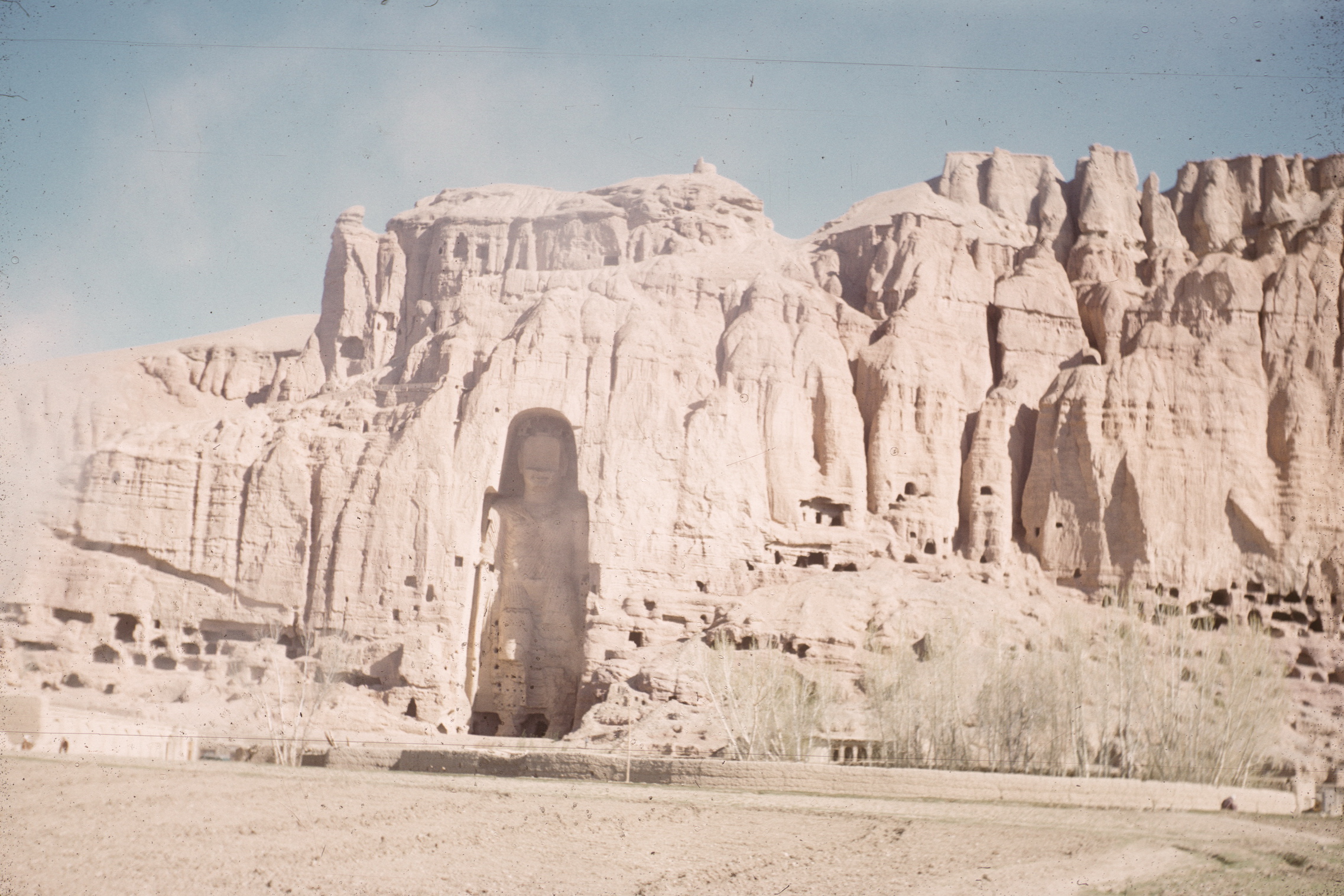
The Bamiyan Buddhas were two colossal statues carved into the cliffs of the Bamiyan Valley in Afghanistan, standing at 55 and 38 meters tall. Created in the 6th century, these statues were remarkable examples of Gandhara art, blending Greco-Buddhist styles. They were once adorned with vibrant colors and intricate details, symbolizing the cultural and spiritual significance of the Silk Road region. Although tragically destroyed in 2001, the site remains a UNESCO World Heritage Site, with ongoing efforts to preserve the surrounding caves and murals. The Bamiyan Buddhas stood as a symbol of Afghanistan’s rich cultural heritage and religious tolerance, reflecting the region’s history as a crossroads of civilizations. Their absence serves as a reminder of the need to protect and preserve cultural treasures for future generations.
13. The Angkor Wat Temple Complex – Cambodia
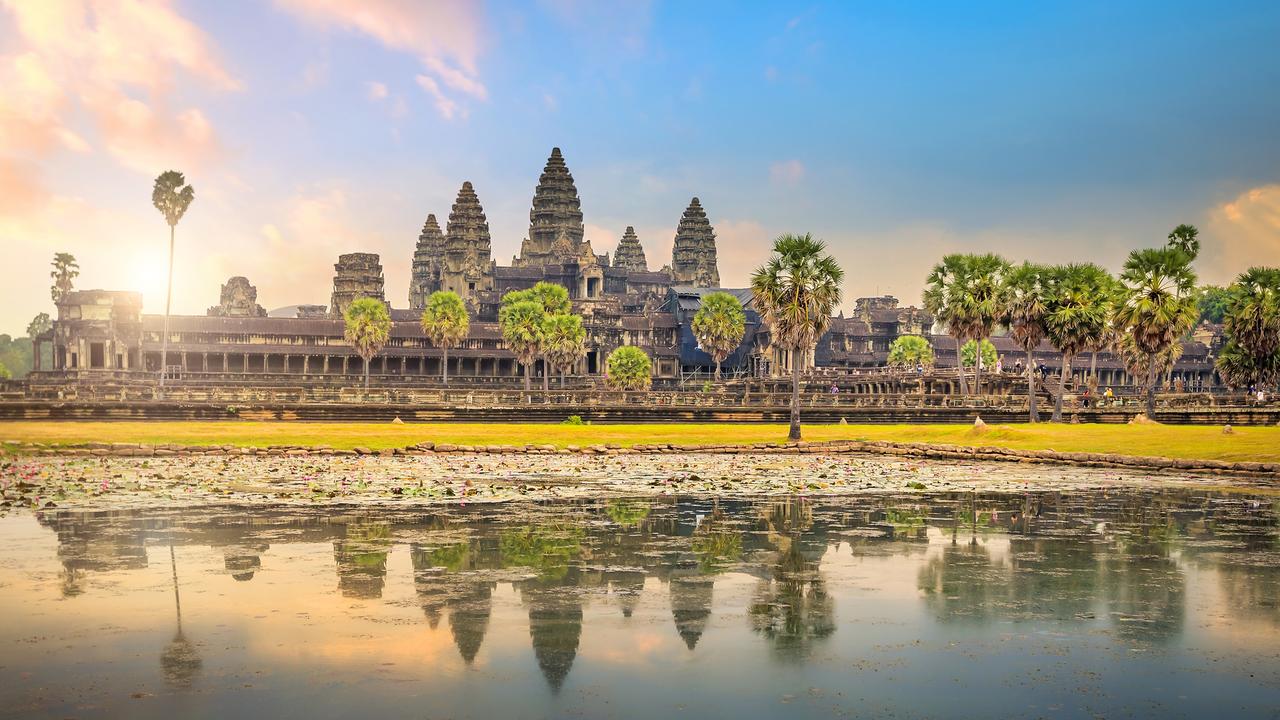
Angkor Wat, located in Siem Reap, Cambodia, is the largest religious monument in the world and an enduring symbol of the Khmer Empire’s architectural brilliance. Constructed in the 12th century as a Hindu temple dedicated to Vishnu, it later transitioned into a Buddhist site. The temple’s layout is a stunning representation of the Hindu cosmos, with its central spire symbolizing Mount Meru, the mythical home of the gods. The intricate bas-reliefs along the walls depict stories from Hindu epics such as the Ramayana and Mahabharata, as well as scenes from daily life in the Khmer Empire. Surrounded by a vast moat and dense jungle, Angkor Wat exudes a sense of mystery and grandeur. Its preservation and restoration have made it a centerpiece of Cambodian culture and a must-visit destination for travelers seeking both spiritual and architectural inspiration.
14. The Avukana Buddha Statue – Sri Lanka
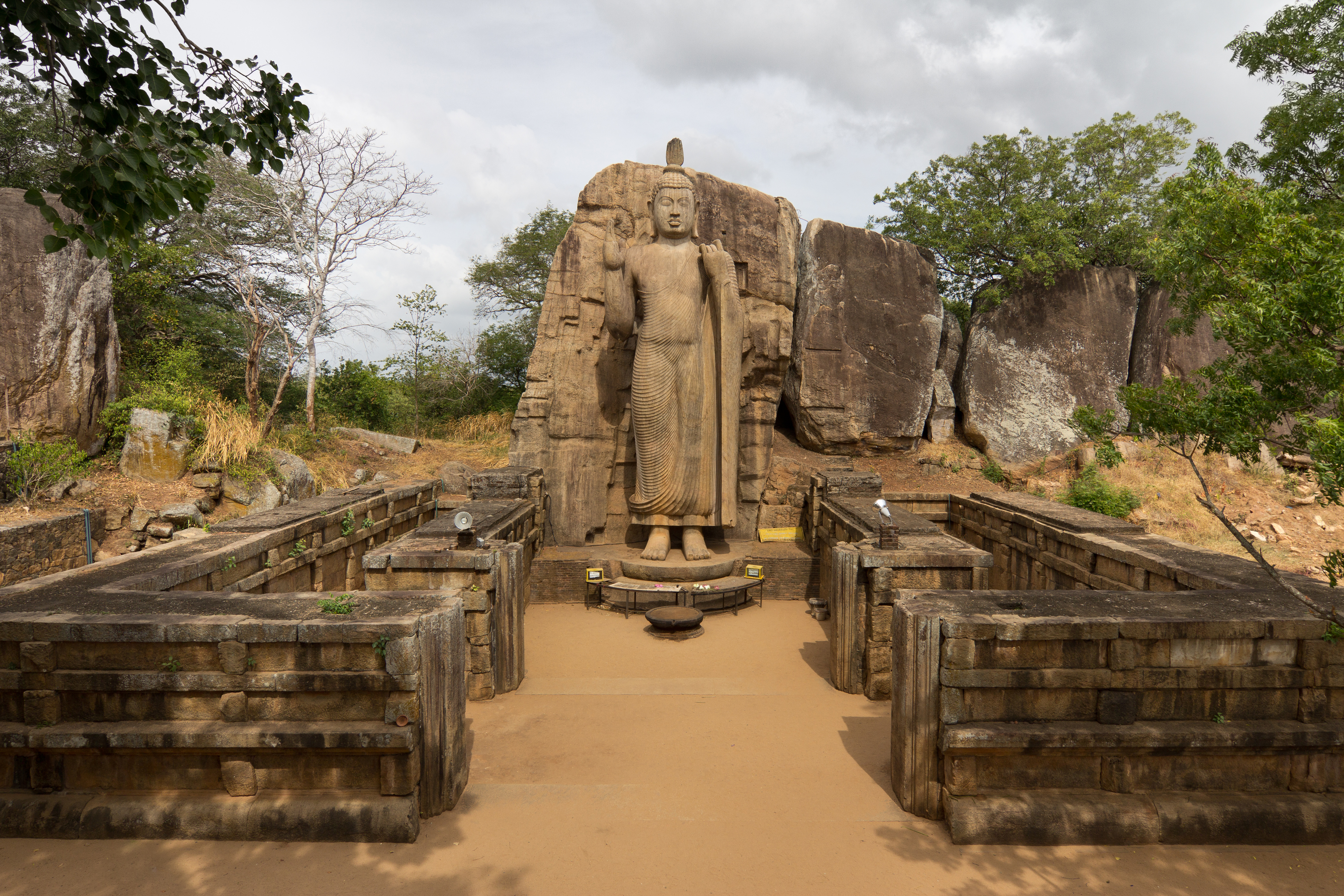
The Avukana Buddha Statue, located near the Kala Wewa Reservoir in Sri Lanka, is a marvel of ancient craftsmanship. Carved out of a single granite rock in the 5th century, the statue stands 12 meters tall and depicts Buddha in a graceful posture known as “asisa mudra,” symbolizing blessing and protection. The intricate details of the robe, which appears to cling to the body, showcase the artistic mastery of its creators. The statue faces a man-made reservoir, emphasizing the Buddhist principles of harmony with nature and the importance of water management. Legend has it that the statue was commissioned by King Dhatusena and carved by a master sculptor in competition with another statue in the region. Today, the Avukana Buddha remains a revered site of worship and a testament to Sri Lanka’s rich Buddhist heritage.
15. Guan Yin Statue, Macau: A Symbol of Grace and Compassion
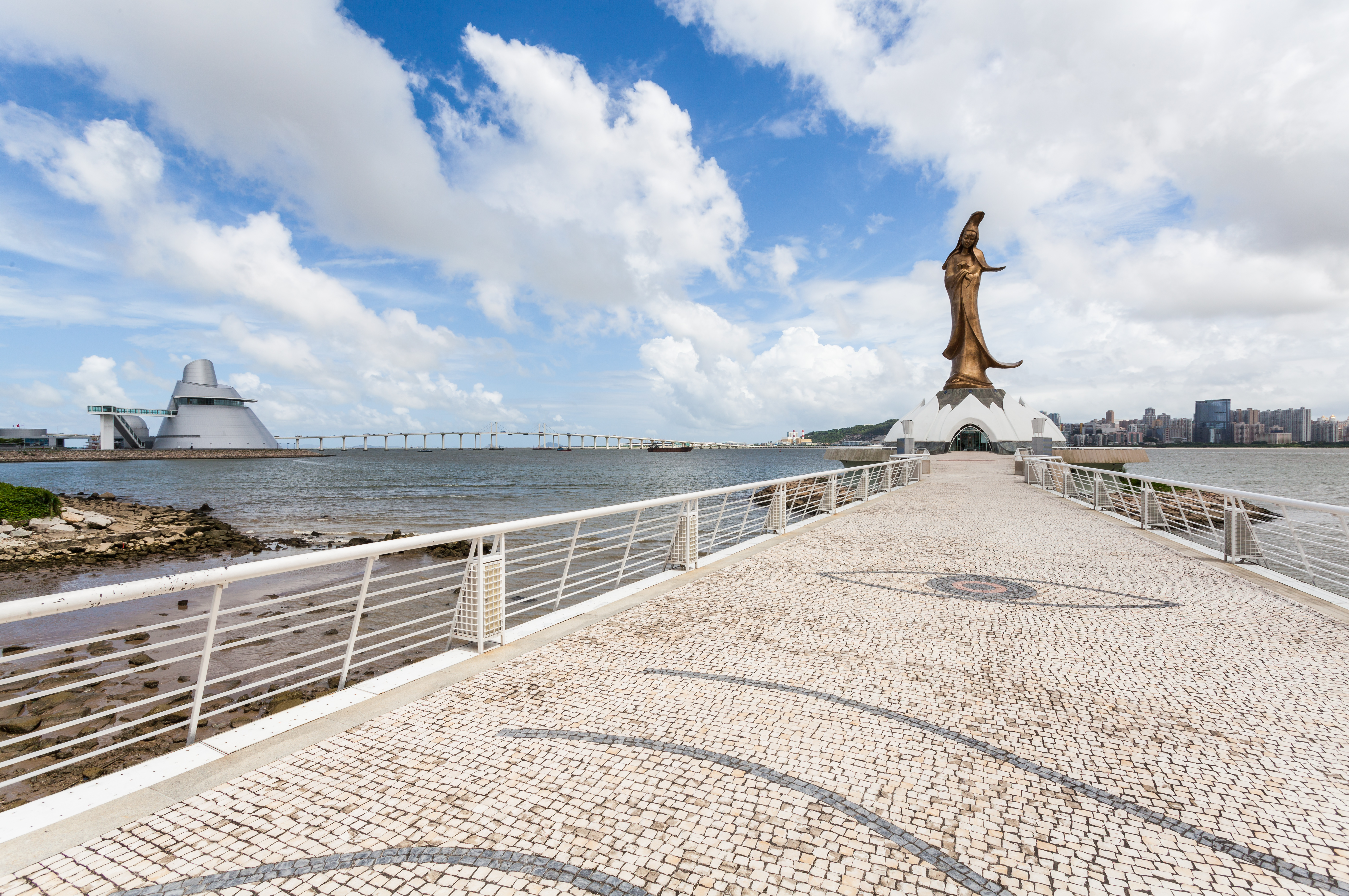
Perched along the picturesque coastline of Macau, the Guan Yin Statue stands as a shimmering symbol of peace, compassion, and unity. Rising 20 meters above its lotus-shaped pedestal, this striking statue is a modern representation of Guan Yin, the Buddhist goddess of mercy, blending traditional Chinese symbolism with contemporary design. Completed in 1999, the statue was created by Portuguese artist Cristina Rocha Leiria, symbolizing the cultural fusion of Macau’s Chinese and Portuguese heritage. Unlike traditional depictions of Guan Yin, this statue is notable for its sleek, metallic surface, made of bronze coated with gold. The goddess appears draped in a flowing robe, embodying serenity and elegance as she gazes toward the horizon. The lotus pedestal beneath her represents purity and enlightenment, further emphasizing her spiritual significance.
Celebrating Humanity’s Boundless Creativity
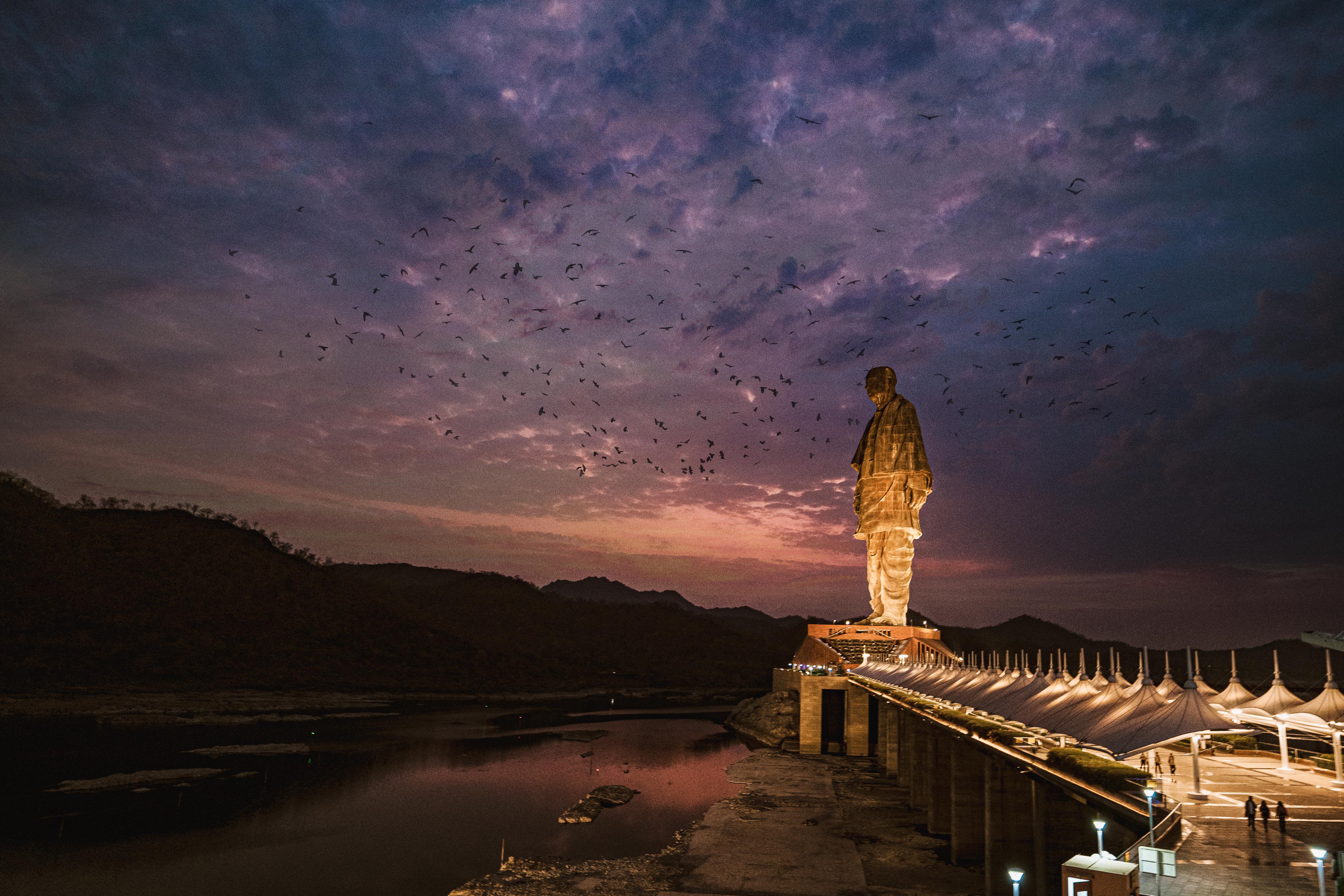
As we marvel at these landmarks, we are reminded of the importance of preserving them for future generations. They are not just physical structures; they are symbols of shared human heritage, embodying the values, beliefs, and stories of civilizations long past. By safeguarding these sites, we ensure that their stories continue to inspire and educate, challenging us to reflect on our own potential to leave a lasting mark on the world. These landmarks encourage us to think about what we can create, preserve, and contribute in our own lives, whether through art, architecture, or simply acts of kindness and connection. In celebrating these wonders, we celebrate the best of humanity—the ability to dream, to innovate, and to create beauty that endures for centuries. Let they be a call to honor our shared history and to look forward with hope and creativity.

